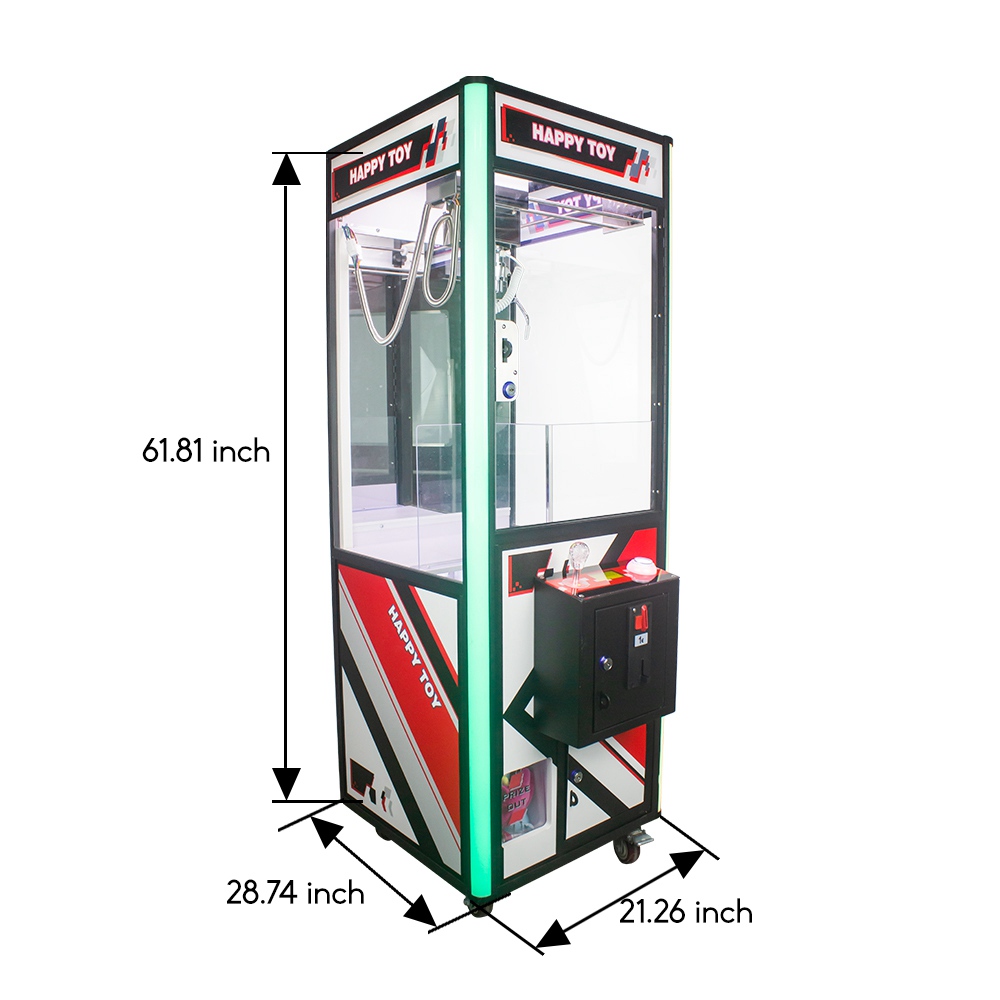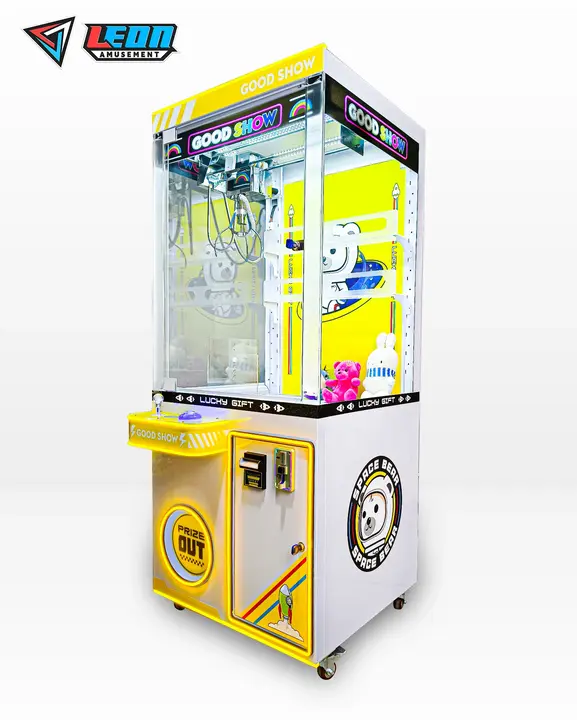Many amusement arcades throughout history have featured crane claw machines for their easy playability and the ability to increase profits. This is a game where players control a mechanical claw to try and grab prizes, with the appeal coming from the challenge after failure as well as success. As of 2020, the global crane claw machine market was valued at $1.6 billion and was expected to reach nearly $2 billion by 2026. Operators keep the game exciting by adjusting the prizes and their difficulty levels. Additionally, the maintenance of crane claw machines costs on average $50 per machine per month, and they can earn up to approximately $3,000 per month in offline amusement venues.
Table of Contents
ToggleEarly History and Technological Innovation
Crane claw machines first emerged in the U.S. market in the early 20th century, designed as a mechanical hand-operated device by Hansel, the wife of an American businessman, to prevent him from crushing items with his hands. Powered by mechanical means, these early machines operated similarly to modern crane claw machines. Handles were turned, causing a padded claw or hook-like apparatus to open and close around a target. Records show that similar designs were patented in the U.S. as early as the 1910s. In the early days, crane claw machines worked with spring and lever mechanics, and prizes were usually basic toys or candy. By 1930, there were at least 3,000 such machines on the market, commonly found on street corners, in bars, or at large events, serving as entertainment devices. However, they frequently fell out of commercial use but were later embraced again.
In the 1970s, with the rapid development of electronic technology, crane claw machines were significantly improved with electric motors and circuit control. In the 1980s, Japan introduced claw machines with more sophisticated mechanical claws, improving both accuracy and maneuverability. Market research suggests that Japan’s claw machine production grew at an annual rate of 40% between 1985 and 1990, as they became synonymous with arcade culture. Innovations during this period allowed players to control not only the grabbing angle but also the strength, increasing the difficulty and entertainment value of the game.

Appeal of Crane Claw Machines
Psychologically, crane claw machines are not successful just because of their simple operation. When players see prizes, their brain’s reward system is activated, and they receive a dopamine hit, encouraging them to keep playing. Over 65% of respondents in a 2021 survey indicated that the appeal of crane claw machines lies in the pursuit of victory itself rather than the actual prize. The frustration after failure motivates players to keep trying, and the inherent difficulty and randomness of the claw machine add to the challenge, making each attempt filled with suspense.
Crane claw machines are also appealing because of their visibility. Nearly half of respondents stated that seeing someone else win a prize instantly made them want to try, according to industry data. This “bystander effect” significantly boosts the machine’s success rate and revenue.

Success of the Business Model
Data shows that the maintenance cost of a crane claw machine is lower than $50 per month, and daily revenue for each machine can range from $30 to $100, depending on location and prize value. Typically, for operators, the cost of prizes is kept at 20% to 30% of the coin input, resulting in a profit margin of over 70%. For example, total revenue from crane claw machines across the U.S. was $400 million in 2019, and after the pandemic, the market quickly recovered, with annual sales approaching $500 million in 2022.
Crane claw machines can also change their prizes to attract a broader customer base and cater to different market demands. In Japan and Korea, operators often partner with popular brands to offer limited-edition items, which increase interest among young customers. For example, in 2019, one Tokyo shopping mall saw a 50% increase in revenue within two months after a popular brand launched an exclusive doll, significantly boosting foot traffic.
Symbol of Modern Arcade Culture
Japan represents 30% of the global total, with over 1.5 million crane claw machines worldwide as of 2020. These machines are not just limited to traditional arcades; they are found in malls, restaurants, and other leisure areas that people frequent. Modern crane claw machines have also incorporated new features, such as allowing players to control the machine remotely using a mobile app, increasing interactivity.
The global crane claw machine market size was estimated at $1.6 billion in 2021 and is projected to reach $2.2 billion by 2026, growing at a CAGR of nearly 10% during this period. The market growth of crane claw machines is driven not only by the expansion of the entertainment industry but also by their flexible operation model and the continuous evolution of arcade culture.








